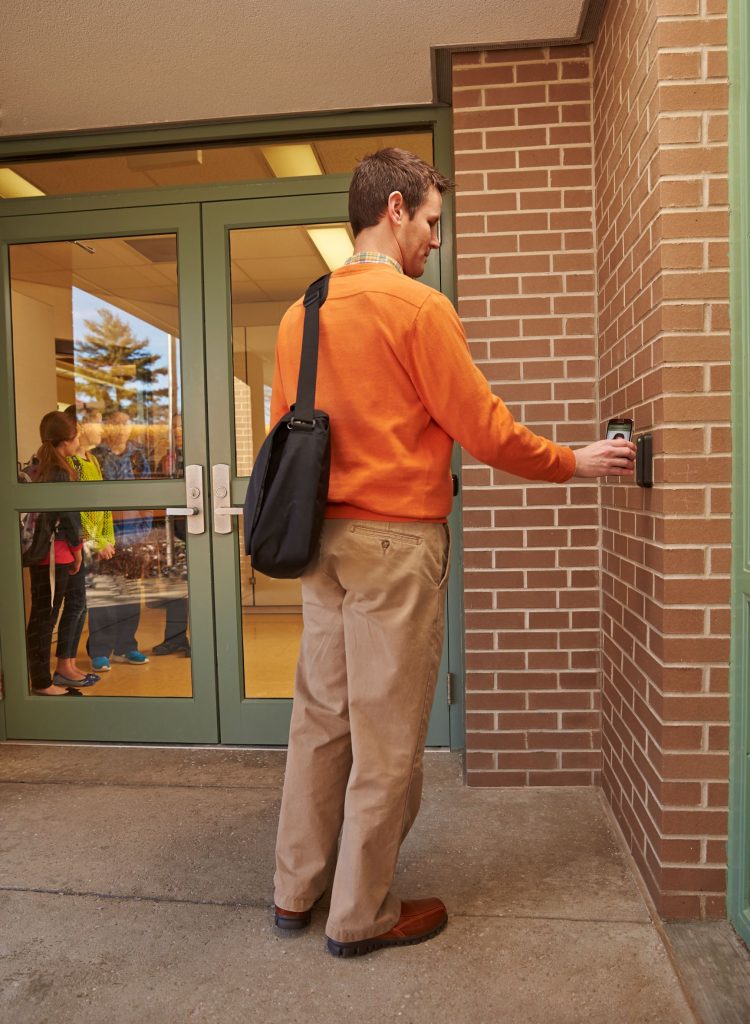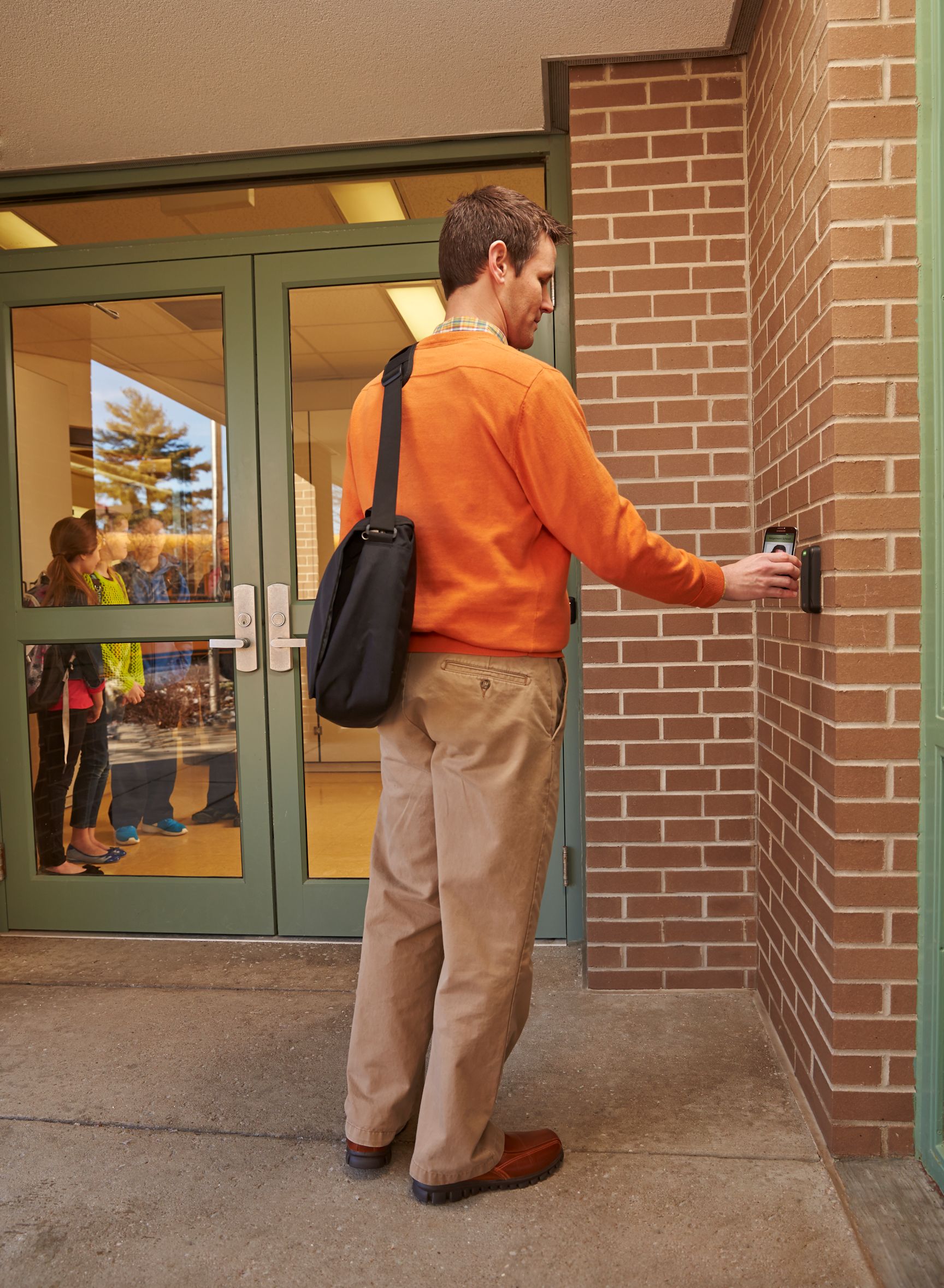 Has this happened to you? You breathe a sigh of relief as the access control hardware on your project is up and running properly in time for the CofO (Certificate of Occupancy) inspection. Then the other shoe drops. You are asked to provide evidence that all of the electrified hardware on the job is listed to UL 294 – Standard for Access Control System Units.
Has this happened to you? You breathe a sigh of relief as the access control hardware on your project is up and running properly in time for the CofO (Certificate of Occupancy) inspection. Then the other shoe drops. You are asked to provide evidence that all of the electrified hardware on the job is listed to UL 294 – Standard for Access Control System Units.
References to the UL 294 listing have become more prevalent in the latest editions of the model codes, and there are additional changes proposed for 2018. As with many code changes affecting door hardware – especially electrified hardware – there have been questions about when this standard applies.
Not all electrified hardware is required by the model codes to carry the UL 294 listing. This standard is for access control systems, and the listing is only required by code for certain types of systems that incorporate electrified hardware. An automatic operator, for example, is not covered by the UL 294 standard even though it is electrified hardware. On the other hand, a delayed egress lock would require the UL 294 listing if the project had to comply with the International Building Code (IBC). So how do you know when the listing is required and when it is not?
As I wrote in a past article for Doors & Hardware, there are 4 references to UL 294 in the 2015 International Building Code IBC:
- 1010.1.9.6 – Controlled Egress Doors in Groups I-1 and I-2 – applies to the electrified locking of egress doors in certain types of units in a health care facility.
- 1010.1.9.7 – Delayed Egress – applies to delayed egress locks which release within 15 seconds after actuation of the release timer (30 seconds when approved).
- 1010.1.9.8 – Sensor Release of Electrically Locked Egress Doors – applies to electrified locks – typically electromagnetic locks, which are released by a sensor to allow egress.
- 1010.1.9.9 – Electromagnetically Locked Egress Doors – applies to doors with electromagnetic locks released by a switch in the door-mounted hardware.
And 2 references in the 2015 edition of NFPA 101 – The Life Safety Code:
- 7.2.1.5.6 – Electrically Controlled Egress Door Assemblies – applies to doors with electromagnetic locks released by a switch in the door-mounted hardware.
- 7.2.1.6.3 – Elevator Lobby Exit Access Door Assemblies Locking – applies to elevator lobby doors which unlock during a fire alarm to allow occupants of the elevator lobby to pass through a tenant space to reach an exit.
To determine whether the listing is required for a particular product, there are 2 questions to answer:
- Which code is the project required to comply with? If it’s the IBC, there are 4 possible applications where the listing is required; if it’s NFPA 101, there are 2 applications.
- Is the product used in one of the access-control systems listed above? If the hardware in question is not used in one of the applications covered in these 6 sections, the model codes do not currently require the UL 294 listing.
Let’s try some examples using the 2015 IBC and 2015 NFPA 101:
- Panic hardware with electric latch retraction used on an exterior door, where a card reader retracts the latch for access and the panic hardware allows free egress – UL 294 is not needed because this application is not required to comply with any of the 6 code sections listed above.
- An electromagnetic lock that is released by a sensor which detects an approaching occupant – UL 294 is required by the IBC (section 1010.1.9.8) but is not required by NFPA 101, since UL 294 is not referenced in section 7.2.1.6.2 – Access-Controlled Egress Door Assemblies.
- An electromagnetic lock that is released by a switch in door-mounted hardware – UL 294 is required by both the IBC (section 1010.1.9.9) and NFPA 101 (section 7.2.1.5.6).
- A fail safe electromechanical lock which allows free egress to a stairwell and can be remotely unlocked on the stair side for stairwell reentry – UL 294 is not required because neither code references UL 294 in the stairwell reentry section (IBC section 1010.1.9.11 and NFPA 101 section 7.2.1.5.8) and this electrified hardware application isn’t required to comply with any of the code sections listed above.
- Delayed egress panic hardware which delays egress for 15 seconds and allows immediate egress upon fire alarm – UL 294 is required by the IBC (section 1010.1.9.7) but is not currently required by NFPA 101 as it is not referenced in section 7.2.1.6.1 – Delayed-Egress Locking Systems.
.
Any questions? If you want to check any other examples, just leave a comment.
You need to login or register to bookmark/favorite this content.






Thanks for helping us navigate the important and complicated world of access control. I hope the AHJs are reading this!
You’re welcome! I hope so too! I posted it on an AHJ discussion group so I know at least a few of them read it. 🙂
– Lori
Can you please let me know if Request To Exit PIR’s require a UL listing (Example UL294) I have seen most with UL markings but a few without. Distributors will not stock non UL listed ones is there a reason why? Is it mandatory or are there states where it is not necessary? I can supply a data sheet upon request.
Or is it a matter of not having to worry about not passing the CofO (Certificate of Occupancy) inspection and having to replace product and the logistics of that? Having UL294 just ensures it will pass test?
Hi Joe –
I saw your question on the Building Code Forum and answered it there…here’s what I said:
The model codes are not clear about which components of an access control system are required to have the UL 294 listing. Many accessories, like REX sensors and other switches, power transfers, etc., do not have that listing but often have other UL listings. Whether or not you need the listing for the sensor really depends on the AHJ’s interpretation of the model codes – some AHJs don’t realize that a listing is required, and some AHJs want every component with a wire to have the UL 294 listing (this isn’t really correct – sorry AHJs!).
There’s a lot of information about UL 294 here: http://idighardware.com/2015/11/decoded-code-requirements-for-ul-294-standard-for-access-control-system-units-december-2015/.
I’m sorry I can’t give you a yes/no answer…it really depends on the AHJ until the model codes are clarified.
– Lori
Is there an electrified panic exit device that is UL 294 listed. I’m having trouble finding one.
Hi George –
What’s the application? Most of those products don’t have the UL 294 listing because they are not typically used in one of the types of systems that require it.
– Lori
We have an LAHJ in more than one of our territories that is requiring ALL components of the Locking System to be UL 294 listed in accordance with their adopted code – VCC 2015. They extend this requirement down to anything connected to the electric locking system on a doorway. Any ancillary relays, motion detectors, door contacts (which we have found no options to utilize except for the latchbolt monitors of Electric strikes that are a complete listed assembly and not a field added feature and the Built in DSM in Magnetic locks like the M62D and variants like it that are manufactured as a one unit and listed UL 294 as such. There are a hundred buildings under construction in the Greater Washington, DC area and we cannot be the only Integrator encountering this roadblock.
Any advice from yourself or the field is welcome.
I missed a talking point in the previous post. They are also not allowing ANY parts that are not UL 294 listed to remain in place if there is any connection at all to the new access control locking system. This encompasses any electrified mortise locks, any existing strikes – even if the latch bolt monitoring kit is available and would be exactly the same thing once installed- cannot stay as the assembly must conform to UL 294 as manufactured.
Does anyone know where to find UL 294 electric mortise locks? Or power transfer hinges? Or Door Contacts, surface or recessed?
I welcome any suggestions.
Hi Daniel –
Allegion offers the UL 294 listings on some of those products. Do you have an Allegion rep that you work with? Or do you have a specific list of product numbers?
– Lori